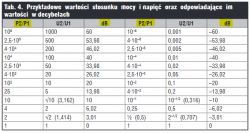Hi, recently I started to study in depth the topic of wireless networks.
I am having trouble understanding the units of attenuation i.e. dB and signal strength dBm.
Let's assume that the RSSI is -20 dBm (the receiver is located right next to the router) and theoretically I would like to put a wall between the transmitter and receiver with an attenuation of 7 dB, how much RSSI will come out if I take into account the attenuation of this wall?
I read somewhere that an attenuation of 3 dB results in a signal drop of 50%. So what purely theoretical, if my signal in a given room is -50 dBM, and then a wall with an attenuation of 3 dB appears then the signal will drop to -75 dBM?
Another question, the router should be operating at 100 mW which is 20 dBm why then right next to the router the signal power is around -15 dBm instead of those theoretical 20 dBm?
Thank you in advance for your time.
I am having trouble understanding the units of attenuation i.e. dB and signal strength dBm.
Let's assume that the RSSI is -20 dBm (the receiver is located right next to the router) and theoretically I would like to put a wall between the transmitter and receiver with an attenuation of 7 dB, how much RSSI will come out if I take into account the attenuation of this wall?
I read somewhere that an attenuation of 3 dB results in a signal drop of 50%. So what purely theoretical, if my signal in a given room is -50 dBM, and then a wall with an attenuation of 3 dB appears then the signal will drop to -75 dBM?
Another question, the router should be operating at 100 mW which is 20 dBm why then right next to the router the signal power is around -15 dBm instead of those theoretical 20 dBm?
Thank you in advance for your time.



